This forest harbours the most diverse assemblage of plants and animals in Africa including over 400 mammal species, more than 1,000 bird species, and likely over 10,000 plant species. Only in Central Africa do forest elephant, gorilla, forest buffalo, bongo, and okapi occur in large numbers across large areas of the forest. This is not only amazing, it speaks of the importance of this forest. The second largest rainforest in the world. The great Congo Basin forest.
This year, we wanted to celebrate the Congo Basin forest, and bring its importance for maintaining the stability of the world’s climate to the world’s attention. With our Give the Congo Basin Forest a Chance Ship Tour, we hoped that more people would come to realise this and the urgency that’s needed to keep it intact.
Here’s a look at our ship tour journey in Central Africa.


Douala, Cameroon
The Greenpeace ship, the Esperanza, began its four week journey in Douala where hundreds came to welcome the ship and join our call for forest protection.
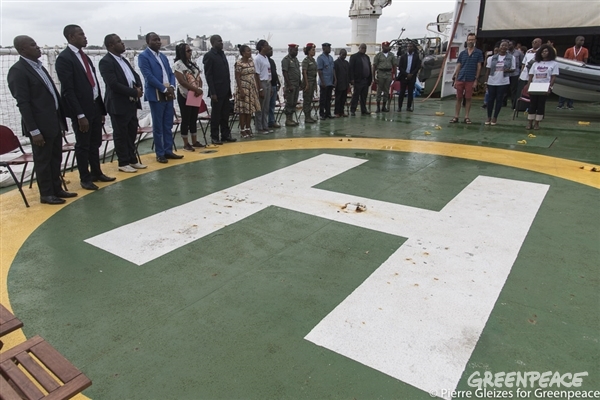
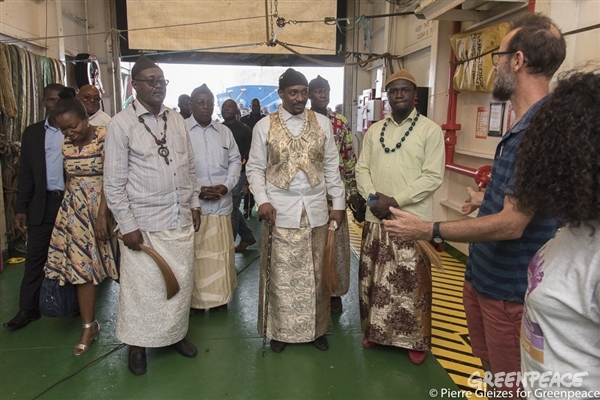
Local and regional officials, Sawa chiefs, dancers, musicians, and our 70 eager and hardworking volunteers came out in numbers.

It was encouraging to see everyone add their wish for the forest on our wishtree, and participate in dancing and singing. The spirit and camaraderie on the ship was infectious and really made for a warm and inviting atmosphere.
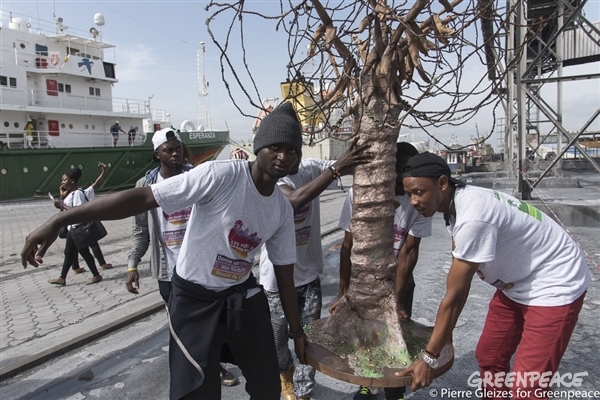
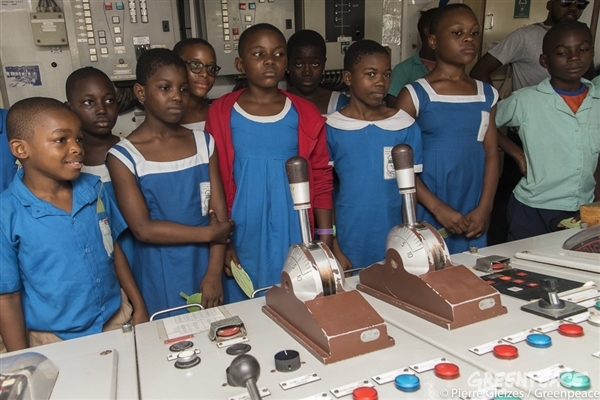
The ship hosted almost a thousand excited Cameroonians who enjoyed a tour of the ship and a spectacular performance from local stars. Our 6 days in Douala, included exciting guided tours of the ship, and a solutions day where chiefs, government officials and the media were invited to give input.
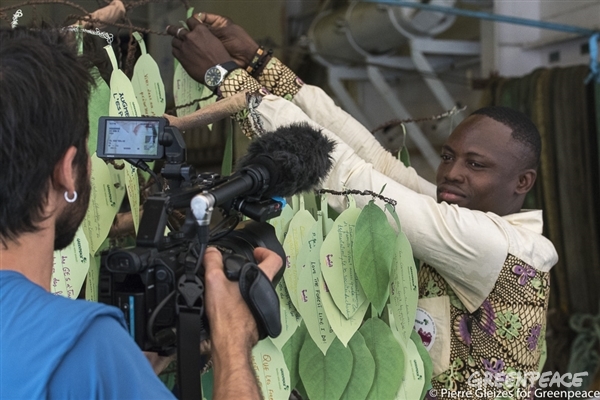
Boma and Matadi, Democratic Republic of Congo (DRC)
After the successful tour in Cameroon, the ship sailed to the DRC. We started with a short, two day stop in Boma, with a warm welcome and dancing. Meanwhile, our invited scientists, national and international media and country officials were on a three-day peatland expedition in the Congo Basin forest.

The ship moved on to Matadi, where a press conference was held, on our Political Day. This is where scientists – Dr. Greta Dargie, Professor Simon Lewis and Dr. Corneille Ewango – shared their findings on the peatlands.
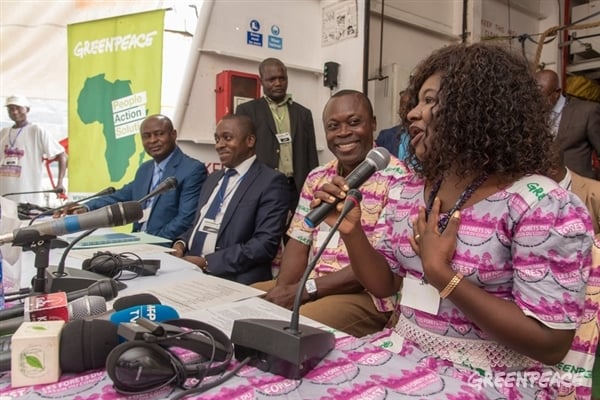
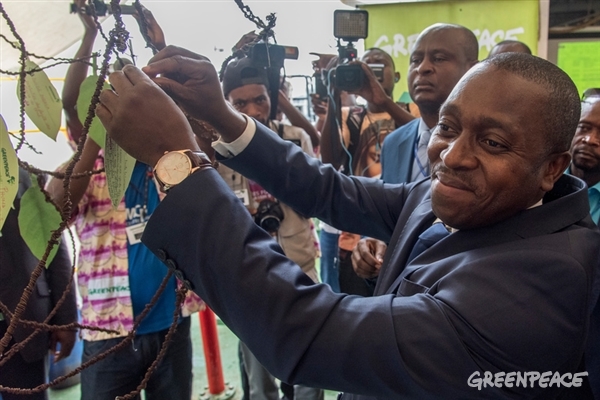
The ship moved on to Matadi, where a press conference was held, on our Political Day. This is where scientists – Dr. Greta Dargie, Professor Simon Lewis and Dr. Corneille Ewango – shared their findings on the peatlands.
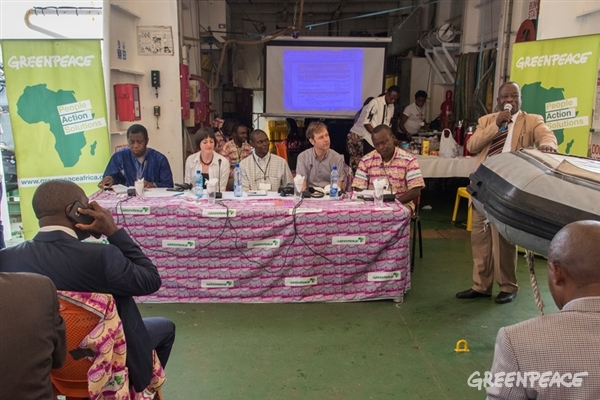

A few things stood out: the peatlands were found to stretch to 145,500 square kilometres, and store 30 billion tonnes of carbon. This is equivalent to 3 years of global carbon emissions, safely tucked away in the Congo Basin peatlands. The scientists also confirmed this to be the world’s largest tropical peatland. This was music to our ears! With so much at stake, this stressed how imperative is it to leave the Congo Basin forest intact.
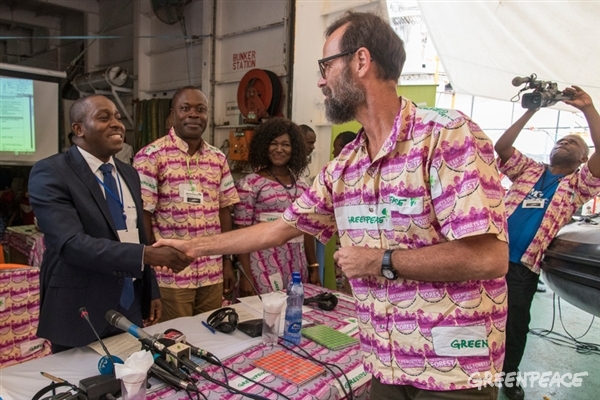
Rich discussions and debates took over on our Political Day, with the Minister of Environment taking on hard questions from the media and our partner organisations. He made a pledge that the peatlands would be left untouched if the country received funds from international donors. The conversation continued on our Solutions Day with partner organisations and forest community representatives. The main objective was to share local and international methods to protect the forest while improving local livelihoods and welfare.
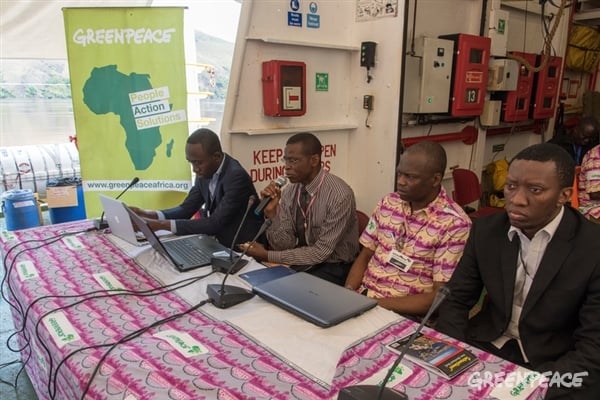
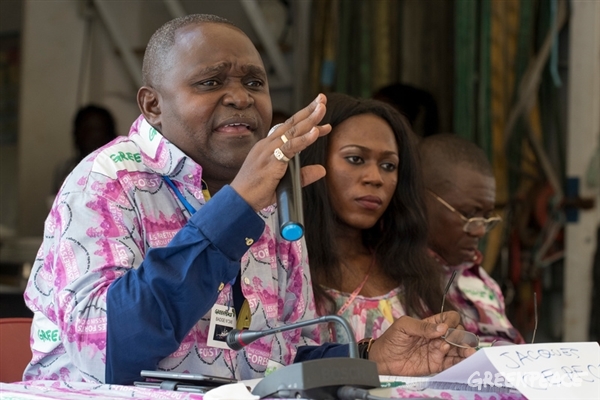
We dedicated our Civil Society Day to our local partner organisations who opened up about challenges and opportunities in protecting the Congo Basin forest. We rounded off this leg of the ship tour with ship visits for schools, government officials, media and the public.
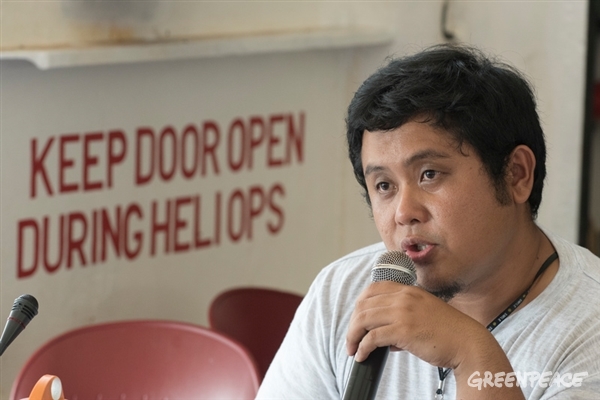
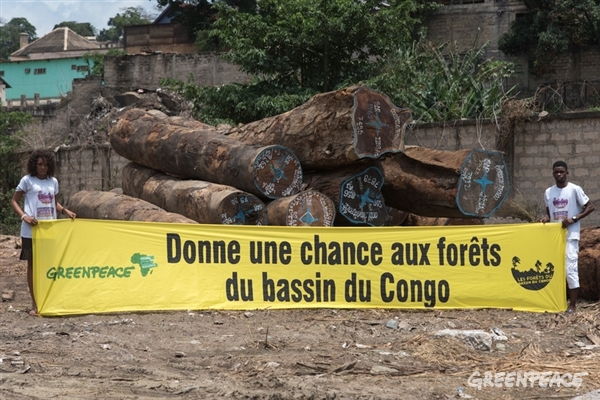
Pointe Noire, Republic of Congo (RoC)
Our four week journey was set to end in Pointe-Noire. After a long, 12 hour transit from the DRC to the region’s port, the Esperanza ship was not allowed to dock and we were turned away. What happened in RoC was really disappointing as our hope was to work with local NGOs and communities to ensure that the forest is kept intact for our climate and future generations. This meant the end of our ship tour, but not our work for the Congo Basin forest.
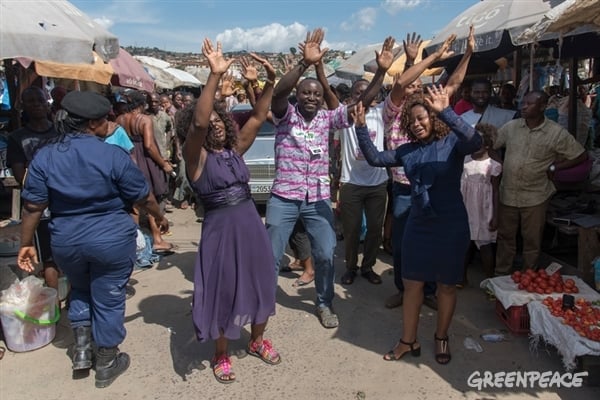
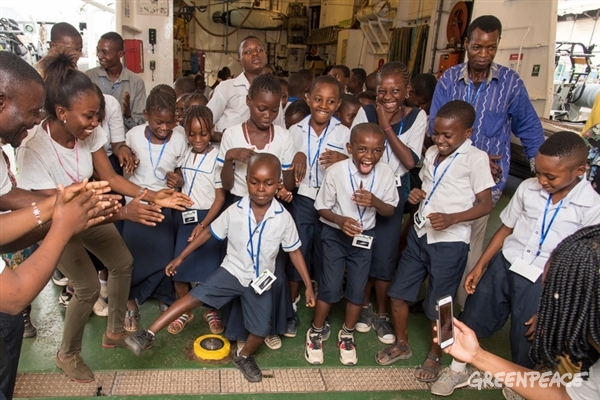
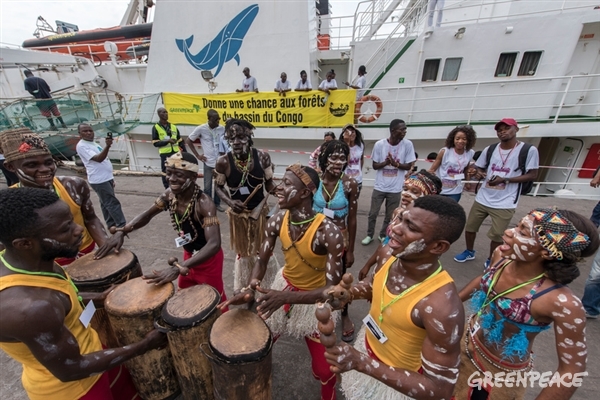
Thousands of people shared a wish for the Congo Basin forest, petitioning global leaders to end forest destruction and keep it intact. Our project leader Victorine, went to the United Nations Climate Change Convention’s Conference of the Parties (COP23) in Bonn, Germany and handed them over to delegates.
She met with Rubin Rashidi Bukanga, Director of Cabinet of the Ministry of Environment, Democratic Republic of Congo, after his speech on peatlands in the DRC. Also Tim Christopherson Coordinator, Freshwater, Land and Climate Branch – Ecosystems Division, UN Environment Programme (UNEP). UNEP hosts the secretariat of the Central African Forest Initiative (CAFI), which is one of the most important bodies that Greenpeace continuously engages with for the protection of the Congo Basin forest.
Victorine handed over the wishes in the form of a picture album, and gave them a DVD of our #DanceForTheCongo videos. Both Bukanga and Christopherson were pleasantly surprised to receive the wishes. They welcomed the responsibility to stand in for the protection of the Congo Basin forest on behalf of the people who sent their wishes.
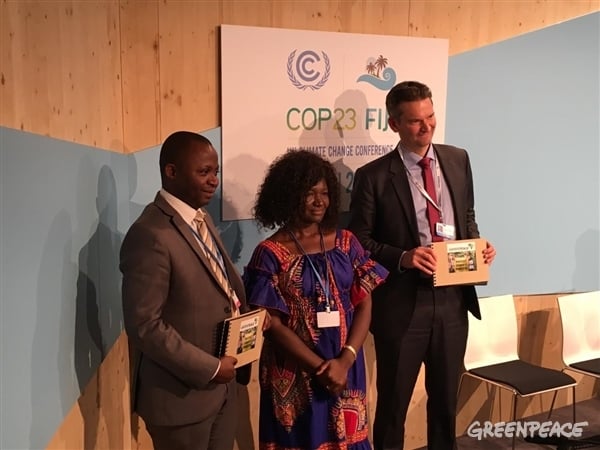
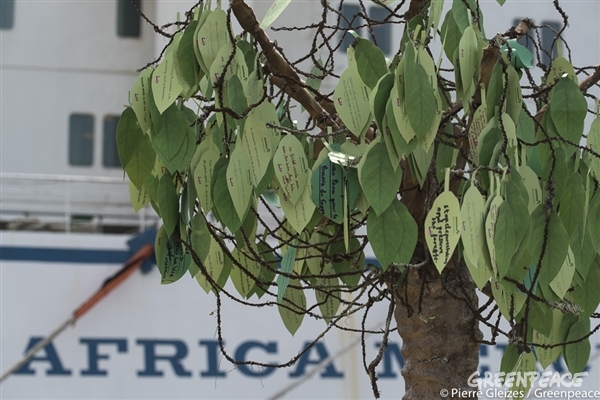
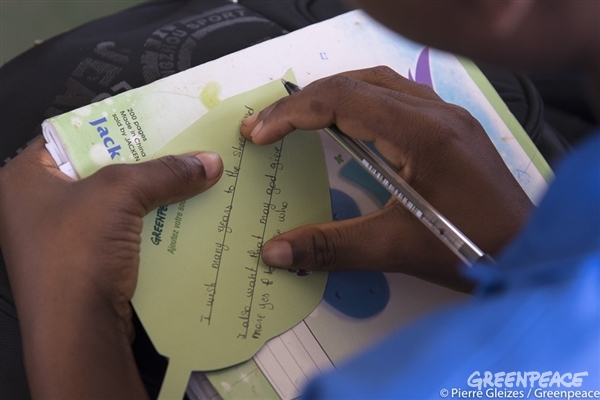
With the passion, love and support the world sent our way, I am reminded that Greenpeace exists because of people power.
To our volunteers, influencers and partner organisations – thank you, you helped us pull off our first forest ship tour in Central Africa. We cannot wait to work together again in the near future.
See all the action in our photo album and this awesome #DanceForTheCongo mashup!
UPDATE: The government of Democratic Republic of Congo (DRC) has recently started a process to lift its moratorium on the allocation of new logging concessions. This would lead to the destruction of large areas of the Congolese forest, in contravention of its own forestry laws and Presidential decree.
You can follow our storymap on our work in the DRC and Cameroon over the years.
